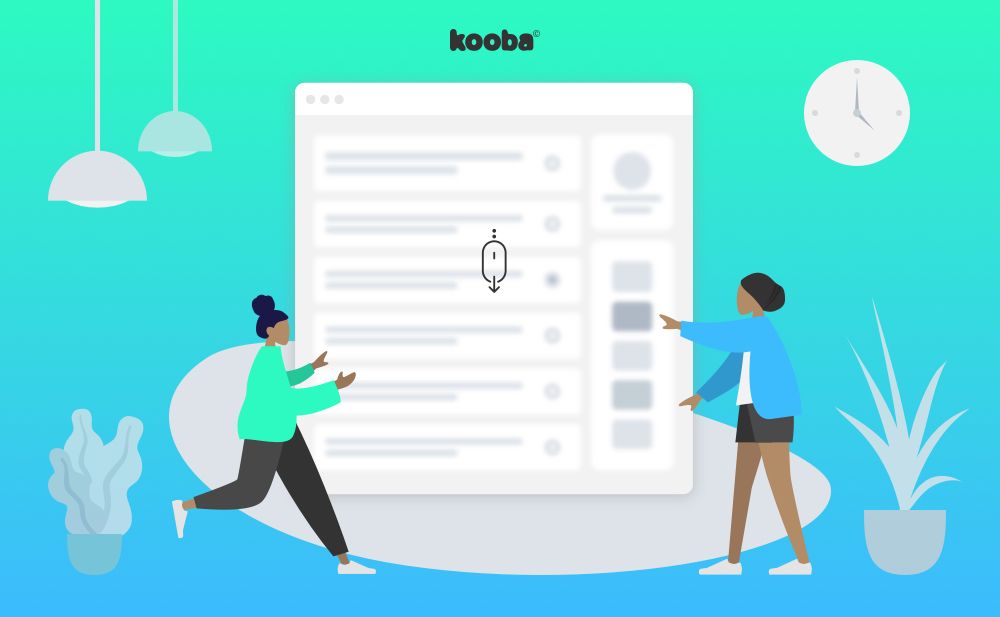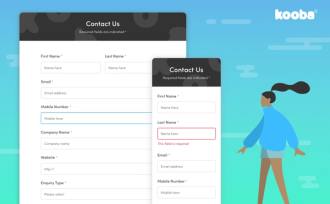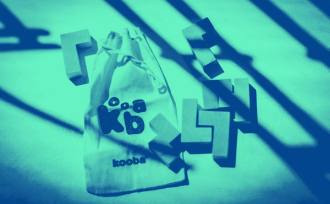The short answer: it depends.
Before embarking on the longer answer, let’s define a few terms so that we’re all on the same page (pun intentional, please accept my apologies).
Most of us know what scrolling is of course. ‘Pagination’ is in one sense the opposite. It is the act of splitting up content onto separate pages. In the context of the online environment, it is most often used to refer to splitting large lists of content, or large streams of content onto multiple pages, usually numbered and with a ‘next’ and ‘previous’ option allowing users to move backwards and forwards through these pages. We use pagination on this blog.
The question then becomes, is it better to show large amounts of content on a single scrolling page, or on multiple pages? It still depends (of course), but the equation is changing.
A short history of scrolling
One reason for this is that scrolling itself is changing. Back in the mists of time - and you may find this hard to believe - the average user scrolled through a website by positioning the cursor over the right hand scroll bar, depressing the left mouse button, and moving the mouse up and down the desk.
No wonder designers and executives tended to frown on sites that involved much (or any) scrolling.
Fast forward to 2019 though, and the growth of smartphones has made scrolling in mobile sites and apps a fundamentally different experience. The act of simply swiping the thumb to bring up additional content on the same page (or rolling your finger over a mouse) has turned the tables.
Scrolling is now ‘easier’ than finding a link to the next page and clicking on it.
Over the same time period, many ‘sites’ emerged that contained large amounts of user-generated content. Think Facebook, Twitter and so on. With an effectively limitless amount of content, and a desire to keep users in the ‘stream’ for as long as possible, the concept of ‘infinite scrolling’ was born.
Nowadays infinite scrolling appears outside of the context of social media. If you’ve ever wondered “are these other articles on the web that I might be interested in ever going to end?” I can put you out of your misery. The answer is “no”. You are on an infinite scrolling site, and the longer you scroll the more ‘impressions’ you generate. When you realise that impressions are worth something, it all starts to make sense.
The benefits of pagination
So scrolling is in some sense ‘easier’, and it tends to deliver greater engagement (that’s the impressions again). It certainly offers the path of least resistance to the user. But that doesn’t always add up to the best user experience.
To outline some of the benefits of pagination is to simultaneously highlight some of the weaknesses of scrolling (whether infinite or not):
- Pagination delivers structure and feedback. The user sees a page of search results, or links to further content. There are 10 results on this page, and if the user wants more they can make an active choice to do so. There is some sense as to how long this process may or may not go on.
- Pagination supports navigation (and in particular back and forward). In contrast to modern scrolling, ‘back’ as a browser instruction is as old as the hills. Pagination tends to mean content in controllable chunks that can be accessed by moving back and forward. Long or infinite scrolling pages mean users can get lost within the page, or worse lose their place entirely when moving to another page.
- Pagination typically means smaller, shorter pages and as a result reduced load times. Long pages take longer to load, and infinite pages require loading to take place as the user scrolls: not always a seamless experience.
- Pagination, and shorter pages in general, can help in terms of overall navigation. The footer becomes more visible (or is allowed to exist full stop) and there is no need for floating navigation - which can come with user experience challenges of its own.
But there’s one final reason why pagination might be preferred that also sheds light on when long scrolling pages (and indeed infinite scrolling) are most useful. It is this:
If you want to make your visitor DO something, it helps to focus the mind and not continue to offer more and more choice.
Let’s talk about that in a tiny bit more detail.
Conversion vs engagement
We started this piece with ‘it depends’. Now we can establish what it depends on.
Lots of scrolling is great if we care about engagement and impressions. Most of us know the feeling of aimlessly scrolling down a Facebook feed or Twitter stream.
But if we want to get something done, things are different. Consider e-commerce. There is a reason that online stores do NOT show infinite scrolling content in response to searches. To do so is to invite indecision, and worse to convince the consumer that there is probably something better just around the corner or down the page. See also Tinder’s alleged effect on modern dating.
If we want conversion (a sale, a date, the user to pick something and read it), we need to structure choice carefully. We need to make the user stop and think “is the answer to my question or my requirements on this page, or should I continue looking?”. And in the nicest possible way, we need to force them to make that decision.
This is what pagination does.
Of course the flip side of this argument is that if engagement and impressions are the goal, scrolling and indeed infinite scrolling may well be an option. However, if you are a task-focused, conversion-oriented business, then perhaps less so.
There remains one final question: how much scrolling is too much, given that in most cases we believe some is appropriate? The simple answer is to test. Examine scroll maps to establish how many users actually reach the bottom of any given page.
If that number is low, consider breaking up this information into more than one page, or look at alternative design approaches that will encourage scrolling. Ultimately the process is one of trial and error.
You’ll get there in the end (unless you are infinitely scrolling).









